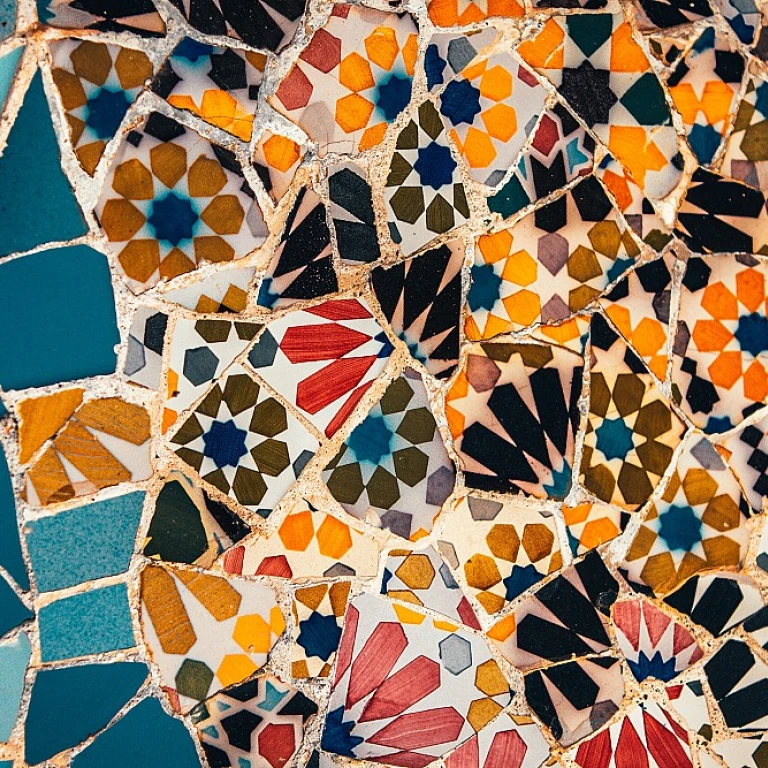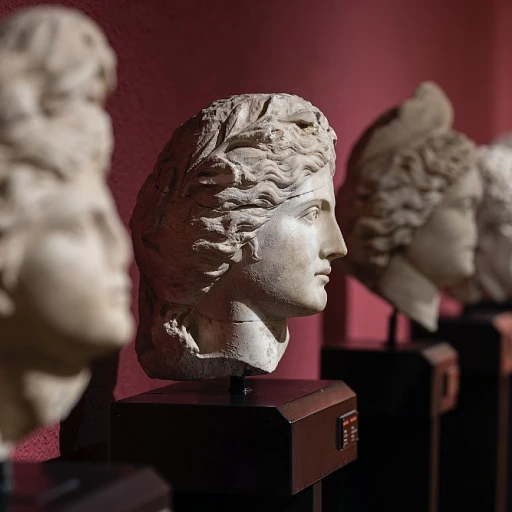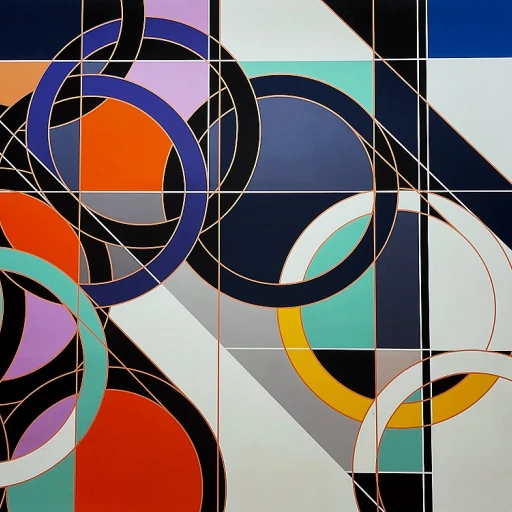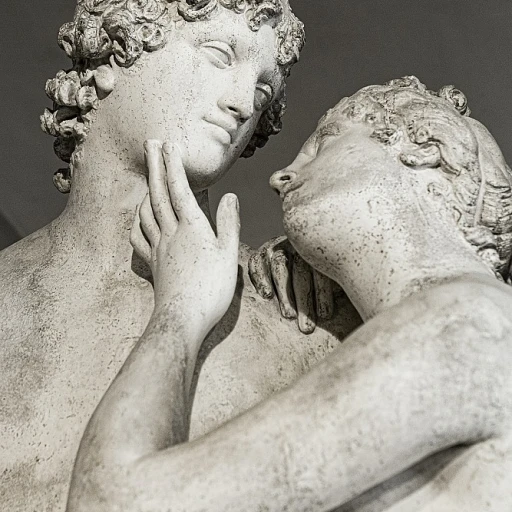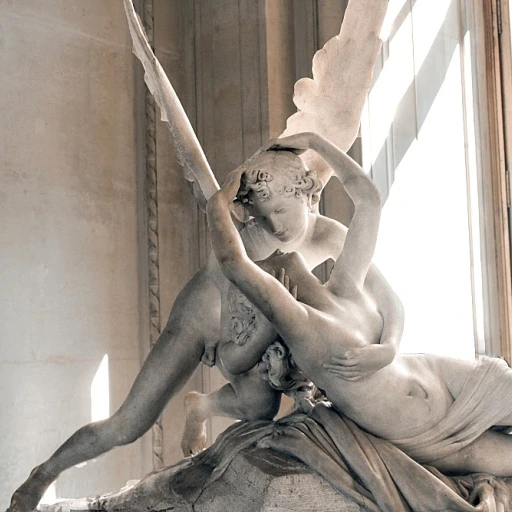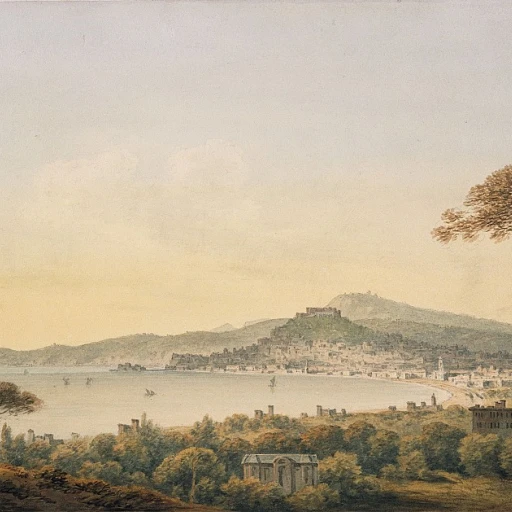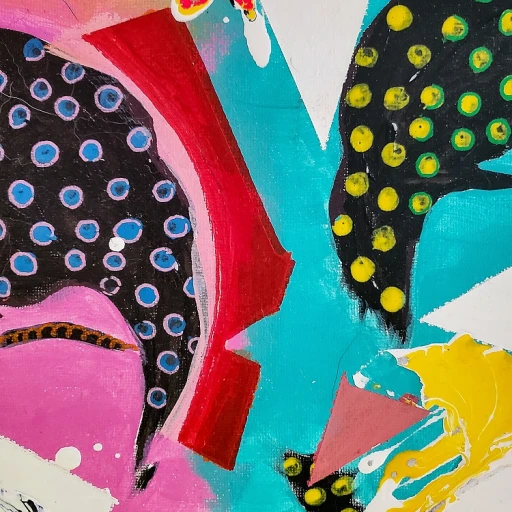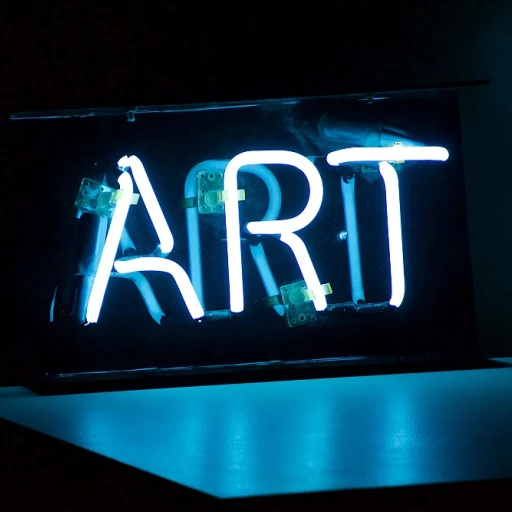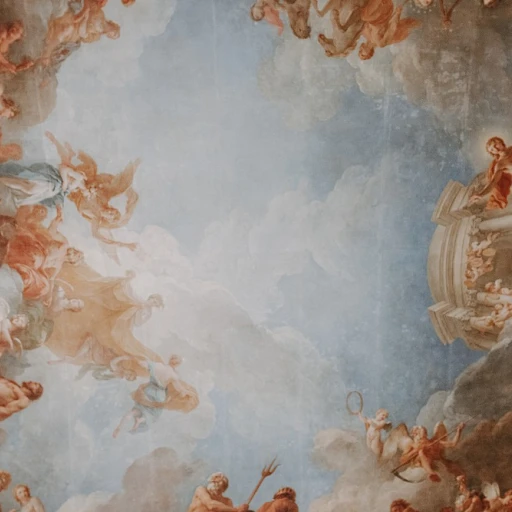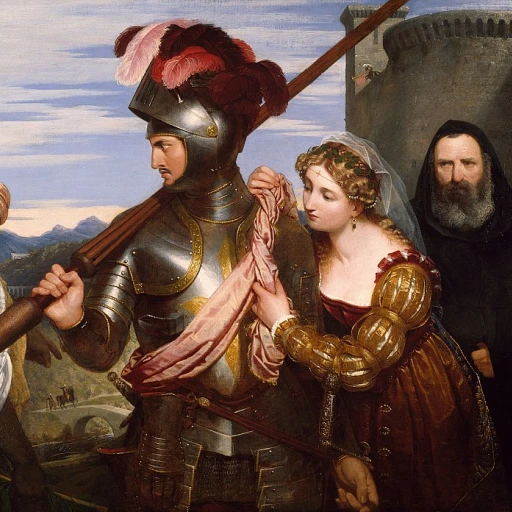-teaser.webp)
The Enigmatic World of Rene Magritte
Venturing Into Surrealist Realms
The mesmerizing domain of Rene Magritte stands at the confluence of several artistic milestones. His surrealist art journey invites viewers into a realm where the boundaries between reality and illusion are gracefully blurred. As an artist whose body of work is regarded as iconic within the surrealist movement, Magritte's paintings continue to intrigue and inspire.
When discussing the entwined lineage of works from surrealist artists like Magritte, one can't overlook the profound influence that contemporaries such as Dali and Man Ray had on each other. While Salvador mesmerized with wild dreams and landscapes, Rene painted objects with an enigmatic undertone, challenging the viewer’s perception of the natural world and sparking numerous discussions in the realm of surrealism.
Bridging the gap between the conscious and the unconscious mind, Magritte's philosophy often intertwined with the theories of contemporaries like Sigmund Freud. These confluences enhanced the concept of exploring the human psyche, embodying similar surreal thought processes as seen in the works of Joan Miro and Max Ernst. The early century period boasted not only a plethora of diverse artistic movements, but also impactful reversals of natural laws that continue to influence a new generation of modern art enthusiasts.
Today, engaging with Magritte’s art is akin to exploring the intricacies of conceptual art. His paintings call upon collectors and curators alike to delve deeper into the world of surrealism, contemplating the spaces between reality, mystery, and dreamlike escapades.
Understanding the Reversal of Natural Law
The Unconventional Approach to Reality
In seeking to comprehend Magritte's groundbreaking inversion of natural laws, one must first understand the ethos of the surrealist movement. Surrealism, thriving as an imaginative escape during the early 20th century, invited artists to delve into the mysteries of the "unconscious mind," as inspired by Freud's psychoanalytical theories. It challenged established perceptions, encouraging creators to think beyond traditional confines, thus changing the perception of reality itself. Magritte, alongside other renowned surrealist artists such as Max Ernst and Joan Miró, redefined what art could express by introducing elements that contradicted logical reasoning. He masterfully used ordinary objects, placed in unexpected contexts, to evoke surprise and provoke thought. His subtle yet profound art celebrated the elegance of visual paradox, often portraying scenes where familiar items defy common laws of nature. This reversal of reality suggests a dream-like world where the imaginative domain rules over rational thought. The magician's card of surrealism art, undeniably, lies in its spectacular ability to thrill and captivate an audience. In Magritte's work, for example, images like a train emerging from a fireplace or a man with an apple covering his face disrupt the viewer's expectations. Each brushstroke challenges the viewer to engage in a cognitive dance between the familiar and the fantastical. Surrealist paintings such as these go beyond mere visual appeal; they engage the viewer in a rich tapestry of symbolism and intellectual engagement. Through his deft manipulation of "reversal natural" concepts, Magritte, akin to a surrealist impresario, invites us into a luxurious realm where the peculiar reigns supreme. For art enthusiasts and collectors intrigued by Magritte's unique ability to play with perception, it's crucial to recognize the intricate tapestry of surrealist and modern art he represents. Those looking to enhance their collection with works reflective of this challenging and enigmatic movement can find an illuminating "exploration" into the "elegance" of such art forms here.Iconic Works: A Closer Look
Delving into Magritte's Iconic Creations
In the surrealist realm, several works leap to the forefront as embodiments of the reversal of natural laws, a core motif of the movement. Rene Magritte, alongside other surrealist artists such as Salvador Dali and Max Ernst, sculpted enigmatic visions that challenge perceptions and question reality, giving life to deeply evocative art. Magritte's works are quintessential in this artistic movement, igniting thought and stirring the unconscious mind. His paintings often feature objects placed in unexpected contexts, defying the natural laws that govern our conventional understanding of the world. This paradigm of reversal is not just a thematic echo but a window into the surrealist ethos. Art lovers find particular fascination in how Magritte utilized everyday items. His painting 'The Treachery of Images' is pivotal. It portrays a pipe accompanied by the phrase "This is not a pipe," a straightforward yet profound questioning of representation and reality. Equally compelling is 'The Son of Man', a notable work where an apple obscures a man's face. This image, painted with Magritte's characteristic precision, boldly defies natural expectations, encouraging the viewer to reconsider the concept of visibility and identity. Magritte was not alone in this artistic rebellion. The early century saw Andre Breton championing surrealism, highlighting the intricate connections between art, dreamscapes, and the subconscious. Surrealism was about peeling back layers of consciousness, as advocated by thought leaders like Sigmund Freud. This defiance of natural laws is pivotal to understanding not only Magritte's art but the surrealist movement at large. It invites us to consider the hidden order behind visual chaos. The interplay of images and thoughts, crafted by hands like Joan Miro and Giorgio Chirico, propels the surrealist dialogue, enriching the broader landscape of surrealism art. For enthusiasts and collectors, these iconic pieces offer not just aesthetic appeal but also a luxury of thought. Such paintings are not mere decor but anchor points for introspective exploration and appreciation of the surrealist artists' revolutionary echoes. Understanding the elegance of geometric forms in this context adds another layer to their captivating complexity. The elegance of geometric art in the luxury sphereThe Luxury of Surrealism
The Subtle Elegance of Surrealism's Alternative Reality
Surrealism possesses a unique penchant for challenging conventions, particularly through the works of Rene Magritte, whose paintings exemplify both luxury and mystique. Magritte and his fellow Surrealists, like Salvador Dali and Joan Miro, introduced us to a gallery of eccentric imagery, bending the rules of reality and perception.
His paintings surprise and delight viewers with juxtaposed objects and unusual scenarios, encouraging a reexamination of natural laws. This art form, indulgent and unconventional, offers an opulence of thought-provoking images that invite deeper reflection, merging dreams with reality.
The artistic movement itself could be considered a luxurious escapade into the unconscious mind, advocated by icons such as Andre Breton. Magritte's works, alongside those of Max Ernst and others, lean into this cerebral opulence, defying logical thinking and rendering visible the quintessence of Surrealism art.
This alternative reality depicted in Magritte's paintings enchants collectors and enthusiasts, opening a world where the inexplicable becomes beautifully tangible. From the mysterious allure of Dali's bizarre landscapes to the stark contradictions of Frida Kahlo's vibrant dreamscapes, Surrealist art continues to woo audiences with its radical departure from traditional forms. It is this lavish embrace of the unpredictable that keeps its legacy alive, appealing to those with a taste for the exquisite fusion of art and imagination.
The Impact on Modern Art
The Ripple Effect of Surrealism in Modern Art
The impact of Rene Magritte's work on modern art is both profound and far-reaching. His unique approach to surrealism, characterized by the reversal of natural laws, has inspired countless artists and movements. Magritte's ability to challenge perceptions and provoke thought through his paintings has cemented his place in the pantheon of influential surrealist artists.
Magritte's influence can be seen in the works of other surrealist artists like Salvador Dali, Max Ernst, and Joan Miro. These artists, along with Magritte, were part of a broader surrealist movement that sought to explore the unconscious mind, a concept heavily influenced by the theories of Sigmund Freud. The movement's emphasis on dream-like imagery and the juxtaposition of ordinary objects in extraordinary contexts continues to resonate in contemporary art.
Modern artists often draw inspiration from Magritte's surrealist art, using similar techniques to question reality and explore the boundaries of perception. This ongoing dialogue between past and present artists highlights the enduring legacy of surrealism and its relevance in today's art world.
Moreover, the luxury art market has embraced surrealism, with collectors seeking out works that challenge conventional aesthetics. The allure of owning a piece that defies natural laws and invites endless interpretation is a testament to the lasting impact of Magritte and his contemporaries. As the art world continues to evolve, the influence of surrealist pioneers like Magritte remains a guiding force, inspiring new generations of artists to push the boundaries of creativity.
Collecting Magritte: A Guide for Enthusiasts
Acquiring Masterpieces: A Collector's Journey
Venturing into the collector's world of Rene Magritte's surrealism can be an exhilarating experience, ripe with opportunities to own a piece of this iconic artist's legacy. Given the artist's fame and influence within the surrealist art movement, understanding the intricacies of acquiring his art is essential for enthusiasts.- Knowledge is Power: Arming yourself with a comprehensive understanding of Magritte’s works is crucial. His artworks, known for their reversal of natural laws, often depict ordinary objects in extraordinary compositions. Familiarity with his iconography will aid in identifying genuine pieces.
- The Art Market Landscape: Engage with the vibrant art market where Magritte’s paintings are highly sought after. Auction houses frequently feature his works. Staying updated on these opportunities is vital for those intent on adding a painting to their collection.
- Authenticity and Verification: When purchasing a Rene Magritte piece, verification of authenticity is paramount. Work closely with recognized art dealers or galleries that specialize in surrealism. This ensures that you acquire genuine works that resonate with the artistic defiance Magritte championed.
- Connecting with Experts: Building connections with experts in surrealist art or joining collector's societies can provide invaluable insights and access. These networks can guide you to rare pieces that reflect Magritte’s imaginative thought.
- Investment Potential: Beyond the aesthetic value, collector pieces by surrealist artists such as Magritte and his peers like Salvador Dali have shown robust investment potential. Understanding market trends and the historical importance of these artists within the surrealist movement can assist in making informed decisions.

